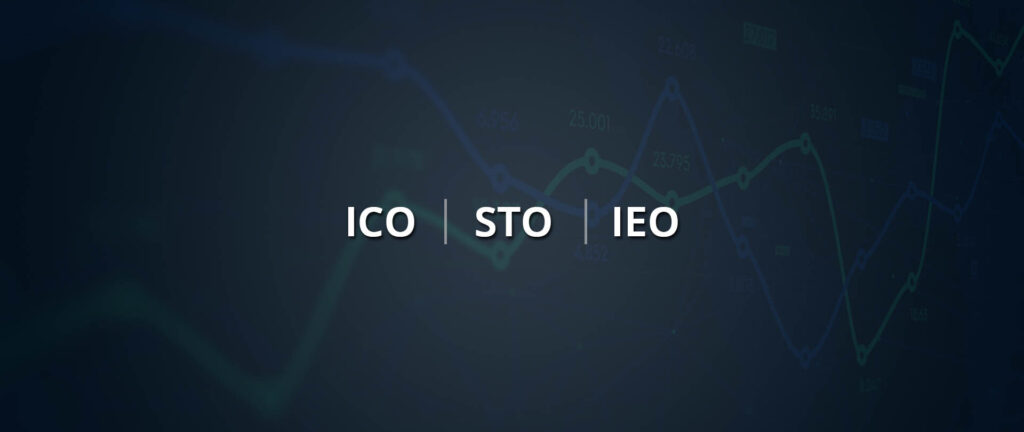Presently, the telecom sector is one of the biggest and is expected to be the fastest growing at a CAGR of 6%. In fact, the expected market size by 2025 is $3461.03 billion. With such a wide footprint, the telecom industry is setting the trends for communication and connection worldwide but also carries certain challenges. With the onset of technologies such as the blockchain in telecom and tokenization of the telecom spectrum, these challenges can be resolved mainly relating to intermediaries, customer service, and deployment interference. Read ahead to know more about the industry and the role of blockchain in it.
- Trends Ruling The Telecom Industry
- Where Is The Telecom Industry Lacking?
- Addressing The ‘Lacks’ With Blockchain In Telecom
- How Is The Telecom Spectrum Tokenized?
- Applications of Blockchain in the Telecom Industry
Trends Ruling The Telecom Industry

A general outlook into the biggest trends shows that telecom is moving from more competitive broadband markets to cybersecurity in the 5G era. As the number of users increases, 5G networks are designed to withstand a wider range of conditions than traditional wireless networks, which means they can provide better service in challenging weather or environmental conditions. Companies like Ericsson and T-Mobiles are leading players in implementing 5G technology.
Telecom industries have adopted AI to tackle cybersecurity, network optimization, and authentication purposes. For example, Nvidia is a leading provider of AI to telecom. It plans to deploy more than 15 million microcells and towers globally in the next five years; Another use of AI in telecom is with digital twins used to test networks before they’re launched to the public.
Another technology associated with 5G gaining momentum globally is the mmWave. It has a capacity in frequency bands above 24 GHz and provides massive bandwidth. Spectrum in mmWave bands will gain further traction as the number of 5G rollouts increases, adoption rises, and the mmWave ecosystem matures. mmWave is used in radio astronomy, remote sensing, automotive radars, military applications, imaging, security screening, and telecommunications.
Where Is The Telecom Industry Lacking?
With new models such as spectrum sharing and obligations to make key bands available for more players, the demand is accelerated so that no time can be wasted in deployment. The Pew Research Center in 2021 reported that;
Approximately 23% of Americans do not have access to a broadband connection at home. The delay in services reaching consumers delays quality innovations by suppliers to be used at their full capacity.
As a consequence, there is a digital divide in society.
The lack of a new 5G spectrum is a barrier to the 5G rollout. In the absence of a new spectrum, and to ensure efficient use, operators must be free to use their spectrum flexibly across technology generations. These issues are being addressed as the demand for networking services is visibly increasing.
Addressing The ‘Lacks’ With Blockchain in Telecom
Blockchain’s influence in the telecom sector is expected to reach a market value of $993.8 billion by 2023. Most telecom companies rely on complex relationships between third-party providers to deliver quality and comprehensive customer services. Recently, telecom has joined hands with the thriving blockchain technology. It helps to build efficient and transparent telecom systems that people can trust. It also eliminates the wastage of time in passing through intermediaries.
Related article: Blockchain as a Service (BaaS): How to choose the right provider?
Customer Service Providers receive blockchain’s greatest impact in their core management systems. Services such as opportunities for cost reduction gain efficiency and revenue growth through new value propositions. Blockchain can assist in 5G wireless access technology deployments by providing seamless access across various networks to devices and endpoints.
Some ways in which blockchain is used in the telecom industry include:
Blockchain in Telecom Digital Identity Management
Identity as a Service (IaaS) works primarily on decentralized identifiers, identity management, and embedded encryption. The decentralized identifier is secured in cryptography by issuing a private key only known to the owner.
Consensys is a company actively working on blockchain-enabled digital identity management systems aiming at security, storage, interoperability, and tamper-proof infrastructure.
SLA Monitoring
Service Level Agreements (SLA) define the services provided to the customer regarding technical capacity, quality parameters, rate reduction entitlement, etc. Using smart contracts on the blockchain can clarify SLA conditions and make monitoring more transparent.
A paper published on Springer about SLA monitoring and blockchain presents talks about a distributed infrastructure that leverages fundamental blockchain properties to achieve immutable and trustworthy SLA monitoring within cloud services.
Roaming and Settlements
Telecom providers can create smart contracts executed without human intervention. Customers get transparent service, and companies cut costs and increase efficiencies by removing the intermediaries.
The GSM Association has introduced blockchain into roaming and settlement. The organization claims that blockchain can enable faster inter-operator roaming settlement, reducing settlement calculation to one-thirtieth of its time.
5G Enablement
The blockchain will enable 5G to reach its full potential by being that trusted source of data that interlinks all devices. CSPs must manage access to rules, agreements, and transactions across multiple access points and mechanisms.
Helium, a company offering wireless peer-to-peer networking services, has partnered with FreedomFi, to bring a DIY or do-it-yourself tech package for building 5G networks. The company pays every participant to support the rollout of advanced wireless networks by building their own mini cellular towers.
Data Privacy and Security
The personal data would be kept separate from the blockchain in an “off-chain” data storage with only its cryptographic hash value or evidence on a blockchain platform.
How Is The Telecom Spectrum Tokenized?
Tokenization in the telecom spectrum management architecture is essential for the integrity and security of user transaction data. The security of the whole management scheme of the telecom industry is powered by blockchain technology, ensuring complete user-centric privacy.
Blockchain-based tokenization can be seen in two broad Spectrums, Accessing and Sharing.
Dynamic Spectrum Access (DSA): A digital token, called a spectral token, is introduced to validate and track a licensed frequency band while ensuring sequential access to the spectrum by secondary users to avoid interference. The proposed platform enables advertising and sensing-based spectrum sharing with coded leasing policies in the smart contracts, which digitally enforce the leasing agreement.
Dynamic Spectrum Sharing (DSS): Blockchain is being considered an enabling technology for providing decentralized security and efficient spectrum sharing for 5G. The implementation of a blockchain radio access network (RAN) considers the spectrum as the basic digital asset that is traded between the access point (AP) and user equipment (UE). The spectrum is considered an asset and represents a short-term right to exclusively transmit or receive with fixed power over a specific channel within a particular geographic area. Information about any spectrum asset is recorded on the blockchain.
The process of tokenizing the telecom spectrum involves:
Creation of a Market Digital Asset Token
A digital asset token is created to validate and track the usage of licensed frequency bands. Each frequency band is coded as a token. The tokens allow users to own frequency bands by paying the authority.
Related article: What are Web 3.0 crypto tokens? Explained with examples
Creating a Trading Token
Digital tokens can be created to ascertain trade in the Secondary Spectrum Market. It is a unit incentive to be paid for the secondary radio spectrum trade-in SSMs. The token provides a methodology for revenue exchange among SSM entities without any involvement of a third party, such as banks, and helps to avoid the related incremental transaction costs.
Bid/Auction Exchange in Spectrum Sensing
The digital tokens can be used as the mode of payment for the bid/ auction of vacant channels in spectrum sensing. It is a unit incentive to be paid for the transaction process.
Applications of Blockchain in Telecom Industry
Revenue Distribution And Facilitation Among SSM Entities:
Future Secondary Spectrum Markets (SSMs) depend heavily on the licensed spectrum and communication infrastructure shared by mutually competitive Primary Licensed Operators (PLOs). SSMs provide much cheaper service to wireless users because they do not require the purchase of licensed bands for their operation.

Telecom tokenization proposes a new virtual token for the secondary spectrum trade. It is a unit incentive to be paid for the secondary radio spectrum trade-in SSMs.
The token provides a methodology for revenue exchange among SSM entities without any involvement of a third party, such as banks, and helps to avoid the related incremental transaction costs. The virtual tokens are proposed to be exchangeable among participating PLOs over the trade horizon.
For this purpose, a token exchange block can be introduced to enable the exchange of tokens among PLOs to either buy (accumulate) enough tokens to meet the floor value or to sell spectrum currency to convert their earnings as profit into FIAT money. The token exchange based on the floor value keeps the secondary spectrum trade fair.
Blockchain in Telecom Spectrum Sensing Platforms

The blockchain in telecom spectrum sensing platforms involves a Secondary User (SU) that carries out spectrum sensing to identify a vacant network channel. Primary Users (PU) are spectrum holders and own the vacant channels. A new virtual token is proposed for bidding/auctioning vacant network channels. It is also a unit incentive to be paid for the transaction process. The token provides a methodology for revenue exchange for the users without any involvement of a third party, such as banks, and helps to avoid the related incremental transaction costs.
Blockchain in Telecom Dynamic Spectrum Sharing (DSS)

Tokenization of telecom allows smart-contract enabled Dynamic Spectrum Sharing (DSS) solution via smart contracts over the blockchain. A novel spectrum market digital asset is tokenized and developed and is used to validate and track the usage of licensed frequency bands. The platform allows users to own frequency bands by paying the authority. Each frequency band is coded as a spectral token, and a PU may lease it to an SU.
Blockchain In Telecom Asset Tokenization
Tokenization will help the Content Distribution Platform for customer engagement involves the creation of a digital platform powered by blockchain for the telecom provider with exclusive digital content for users.
The telecom platform will distribute collectible digital content such as videos, audiocasts, images, and even books. Digital content can be securely stored in platform-managed storage networks with copy protection.
Related article: How to approach blockchain app development in 2022?
Virtual Tokens are proposed to be used in the platform to purchase exclusive digital content and experiences. The tokens can be used as a digital currency for payments within the platform. The blockchain platform registers content via tokens and records transfers, usage, and other actions for the token within the system. The platform can provide smart contracts supporting various intellectual property transactions, including transfer, copy, limited access counts, and limited access length.
Bottom Line
Using blockchain in the telecom industry offers several technical and business benefits compared to the centralized geolocation database. Tokenization of the telecom industry using the blockchain presents advantages like a transparent ledger for spectrum auditing and management, high availability, strong security, and smart contracts to handle complex sharing arrangements and enforcement of regulatory policies.
Blockchain also brings in novel concepts in the telecom industry, such as incentivizing users to share spectrum or perform spectrum sensing, maintaining control over their own data, and removing the need for central database operators. The article also discusses the various ways blockchain is used for spectrum management. Spectrum access and sharing coordination, secondary spectrum trading market, and the use of blockchain as a secure spectrum database prove that blockchain and tokenization have unquestionable advantages for spectrum management.


